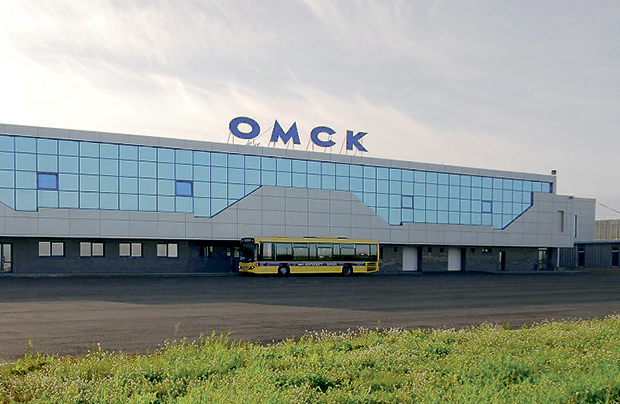
Russian Emigration Goes ‘Wholesale’: Workers in Omsk Oblast Fleeing Economic Collapse
Publication: Eurasia Daily Monitor Volume: 15 Issue: 32
By:

Many in Moscow and the West have long kept track of what might be called “retail” emigration from Russia: the flight of people who have landed in trouble with the authorities and sought asylum in the Baltic countries, Western Europe or the United States. But this outflow is apparently now being overwhelmed by “wholesale” emigration, with ever more Russian workers leaving their country in the hopes of finding work abroad.
Needless to say, this is not a phenomenon Moscow has any interest in calling attention to; and consequently, figures about its total size are almost impossible to come by. But the seriousness of this outflow is suggested by data from Omsk oblast, where last year some 7,608 people, predominantly of working age, fled to Kazakhstan (4,721), Ukraine (696), Germany (320), Georgia (27), the US (20) and Canada (11). Wages in this Siberian border region of Russia fell by 13.7 percent last year (Omsk.gks.ru, accessed March 1; Lenta.ru, Kommercheskiye Vest, February 22).
The numbers of Russians from Omsk in Georgia and the US are larger than the political émigrés, who have received far more attention; and those for Kazakhstan, Ukraine and Germany are orders of magnitude larger.
Most unemployed Omsk residents who left the oblast in 2017 went to find work elsewhere inside Russia, of course. According to regional statisticians, more than 56,000 moved to other cities in the country, nearly 66 percent more than the year before. But numbers of those seeking work abroad appear to have increased by an even larger margin. The two top foreign destinations for these Omsk émigrés are quite illuminating. The migration patterns highlight the fact that working conditions in Kazakhstan, and now increasingly in Ukraine, are better than in Siberia—a situation that is likely also true for large portions of the rest of the Russian Federation that face similar economic troubles.
If one extrapolates from these Omsk figures, it is entirely possible that several hundred thousand Russian workers left their country last year, highlighting Russia’s economic plight and making it ever more difficult for immigrants from Central Asia to compensate for Russia’s demographic decline. In fact, the number of such immigrants to Russia is falling. According to the Moscow Center for Strategic Planning, their numbers have declined by 15 percent since 2015 as a result of the devaluation of the ruble and the worsening economic situation in the Russian Federation (Lenta.ru, January 26).
According to the Omsk city business newspaper Kommercheskiye Vesti, the economic situation in what many call the capital of Siberia is dire. The average monthly per capita incomes there have fallen by 13.7 percent over the last year, although spending has gone up as people have dipped into their savings, borrowed more money and perhaps benefitted from transfer payments sent home by their relatives now working in Moscow or in foreign countries (Kommercheskiye Vesti, February 22). For most of the region’s nearly two million residents, flight abroad is a last resort. That there is so much of it is striking.
The age structure of Omsk oblast’s population further exacerbates the situation. Nearly a third of its people are pensioners, although nearly one in five of these is forced to work to make ends meet. But few from this age cohort have left or are thinking about leaving. As a result, the burden of non-working-age groups on workers is growing (Omsk.gks.ru, February 22).
It would appear from these figures that Omsk oblast, like many predominantly ethnic-Russian regions of the country, is entering a slow death spiral. Its industrial base is disappearing. Its population is aging. And its workers are leaving, first of all to other parts of the Russian Federation, where conditions are relatively better, and then to foreign countries, including those like Ukraine, the US and Canada, where relations with Russia are anything but warm.
Officials in Omsk have lobbied unsuccessfully for aid from Moscow, both to rebuild the region’s industrial base and to fight an environmental disaster there that may also be playing a role in driving locals to seek residence elsewhere. But they have failed on both counts, Tatyana Ivashenko of the Regnum news agency says, losing out to Krasnoyarsk in the Kremlin’s regional development plan. Thus, it appears Moscow may now be resigned to write off places like Omsk (Regnum, February 26).
Omsk residents clearly feel this and are voting with their feet, something that may prevent the region from becoming a hotbed of political opposition in the near future but that will surely accelerate the decline of the region and of Russia as a whole. The Kremlin may be pleased about the former, but it can hardly welcome the latter. The only population “growth” in the country is currently coming from Muslim non-Russians inside Russia and Muslim guest workers from Central Asia and Azerbaijan. And combined with the observed demographic decline of ethnic-Russian-majority regions like Omsk, this means the country will continue to become less ethnically Russian and less religiously Orthodox over time.



